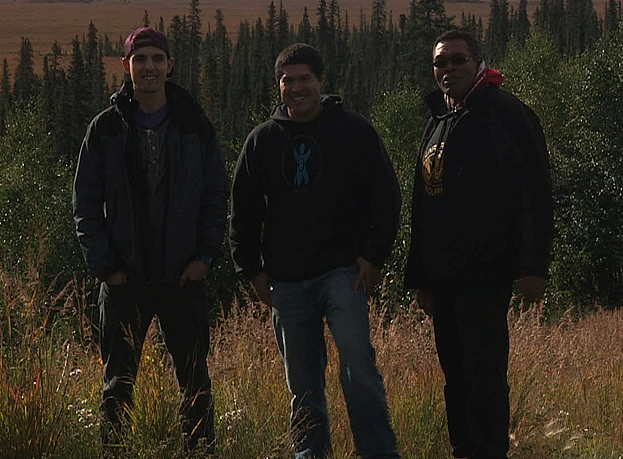New Film Highlights Alaska Native Suicide Prevention
Stephanie Woodard wrote this story for The Indian Country Today Media Newtork as a 2012 National Health Journalism Fellow. Other stories in her series include:
American Indian Youth in Crisis: Tribes Grapple With a Suicide Emergency
‘Diabetes Is Not Our Way’: Cheyenne River Youth Release a Prevention Campaign
Rough justice in Indian Child Welfare
Tribes Take on Youth Suicide With Skits, Ceremonies and Mustangs
Alaska Natives Tackle Youth Suicide With Lessons From the Land

In We Breathe Again, a movie in production about Alaska Native suicide-prevention work, a man talks about his suicide attempt. “I wanted to hunt. I wanted to put food aside, but I couldn’t do it without a vehicle and gas money.” He began drinking and finally turned a gun on himself. The last thing he remembers saying to his family before the gun went off was, “By god, I love you all.”
The people in the film were courageous, willing to talk about moments of anguish as well as triumph, so that others can learn from their experiences, says director and cinematographer Marsh Chamberlain. “Listening to them has been such a privilege. We Breathe Again is about serious issues, but it’s also uplifting—a healing journey. Whatever our characters have been through, they’re all living healthy lives now, so that hasn’t been hard to do.”
Native American Public Television is funding the movie, now in the editing phase. A trailer can be seen on Vimeo. According to executive producer Evon Peter, Gwich’in, the film shows both what drives a person to suicide and the healing work Alaska Native people are doing.
New Hampshire-raised Chamberlain first got to know the Arctic in 2006, after an aunt married into the Inupiat tribe. “Conversations with an Inupiat cousin changed my life,” Chamberlain recalls. “Nathan Nagaruk shared his joys and despairs. As we dug deeper, he told me of friends lost to suicide and the effect on individuals and communities. I had no idea this was such an issue for Native people.”
The two young men decided to make a difference and began creating a movie in 2007, with Nagaruk as producer. In 2010, Peter came on board to consult and offer links to more communities.
Alaska’s glorious terrain, with its wintery mountains and glaciers and vast grassy plains in summer, surrounds the five primary interviewees as they affirm the vital connections to land, culture and community that mean surviving—and thriving—in the new Arctic. They hunt, they pick berries, they sing and share and laugh.
There will be multiple versions of the film: a 90-minute version for theatrical release, to be screened in January 2014, a 56-minute public-television version ready for broadcast in May 2014 and an even shorter one for school showings. “We’ll submit We Breathe Again to Sundance, Tribeca and other major film festivals,” says Peter. “And we’re looking for a grant to make DVDs that we’ll distribute to schools and communities.”
Says Keggulluk, who is Yup’ik and one of the film’s featured interviewees: “I told Marsh he had to document our austere way of life, and to do so in real time. I get calls all the time. A week ago, there was yet another suicide, and yesterday I lost a nephew. It’s so hard, so intense, like a powerful undercurrent that can draw a person under at any moment.”
He compares the ongoing transformations—real and filmic—to ever-changing Arctic snowdrifts: “As lives shift, the movie shifts.”
This story was originally published in Indian Country Today Media Network on January 24, 2013
Photo Credit: Marsh Chamberlain

